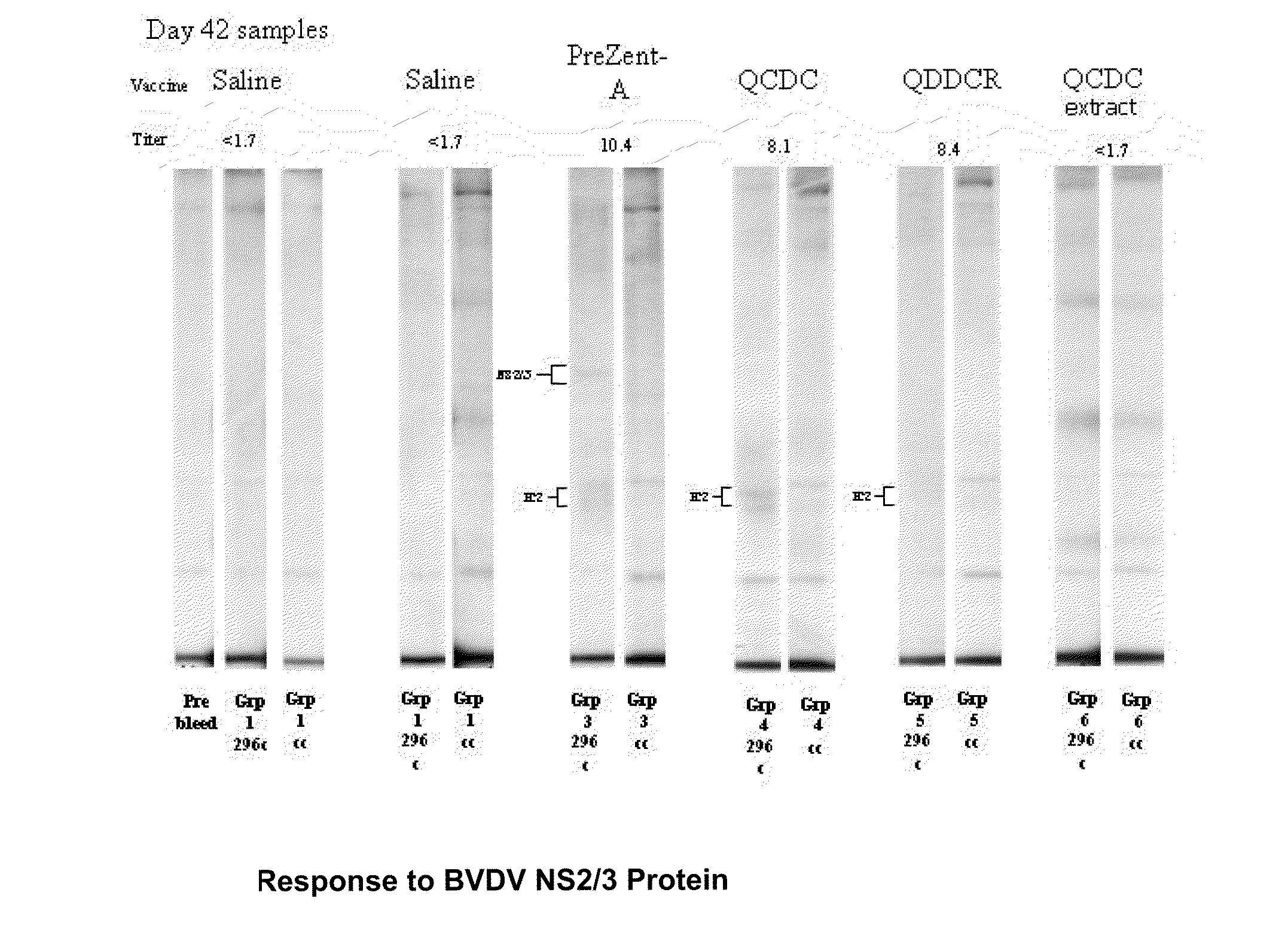Adjuvant compositions
- Summary
- Abstract
- Description
- Claims
- Application Information
AI Technical Summary
Benefits of technology
Problems solved by technology
Method used
Image
Examples
example 1
Quil A / Cholesterol (QC) Solutions
[0215]Quil A (Superfos) was dissolved in water and a 50 mg / ml stock solution was prepared. Cholesterol, (Fabri Chem Inc.) was dissolved in ethanol and an 18 mg / ml stock solution was prepared. The cholesterol stock solution then was filtered using a 0.2-micron filter.
[0216]Range of Quil A and Cholesterol concentrations in the various formulations was as low as 1 / 1 ug / ml of Quil A to cholesterol to as high as 1000 / 1000 ug / mL. To prepare a Quil A / Cholesterol stock solution of 50 / 50 μg / mL, the Quil A stock solution was diluted with water to a concentration of 50 μg / mL. While stirring this solution, the cholesterol stock solution was slowly added to a final concentration of 50 μg / mL.
example 2
DDA (D) Solutions
[0217]Dimethyl dioctadecyl ammonium bromide (DDA; Fluka Analytical), was dissolved in ethanol, and an 18 mg / ml stock solution was prepared. The DDA stock solution was filtered using a 0.2-micron filter.
example 3
Quil A / Cholesterol / DDA (QCD) Solutions
[0218]A Quil A / Cholesterol stock solution was prepared as in Example 1 to the desired concentrations. A DDA stock solution as prepared in Example 2 and slowly added to the Quil A / cholesterol stock solution. The solutions were mixed to achieve the desired final concentrations. The pH of the solution was adjusted with NaOH or HCl as needed to reach the desired final pH, which generally was in a range of about 6.9 to about 7.5.
PUM
| Property | Measurement | Unit |
|---|---|---|
| Fraction | aaaaa | aaaaa |
| Fraction | aaaaa | aaaaa |
| Mass | aaaaa | aaaaa |
Abstract
Description
Claims
Application Information
 Login to View More
Login to View More - R&D
- Intellectual Property
- Life Sciences
- Materials
- Tech Scout
- Unparalleled Data Quality
- Higher Quality Content
- 60% Fewer Hallucinations
Browse by: Latest US Patents, China's latest patents, Technical Efficacy Thesaurus, Application Domain, Technology Topic, Popular Technical Reports.
© 2025 PatSnap. All rights reserved.Legal|Privacy policy|Modern Slavery Act Transparency Statement|Sitemap|About US| Contact US: help@patsnap.com



